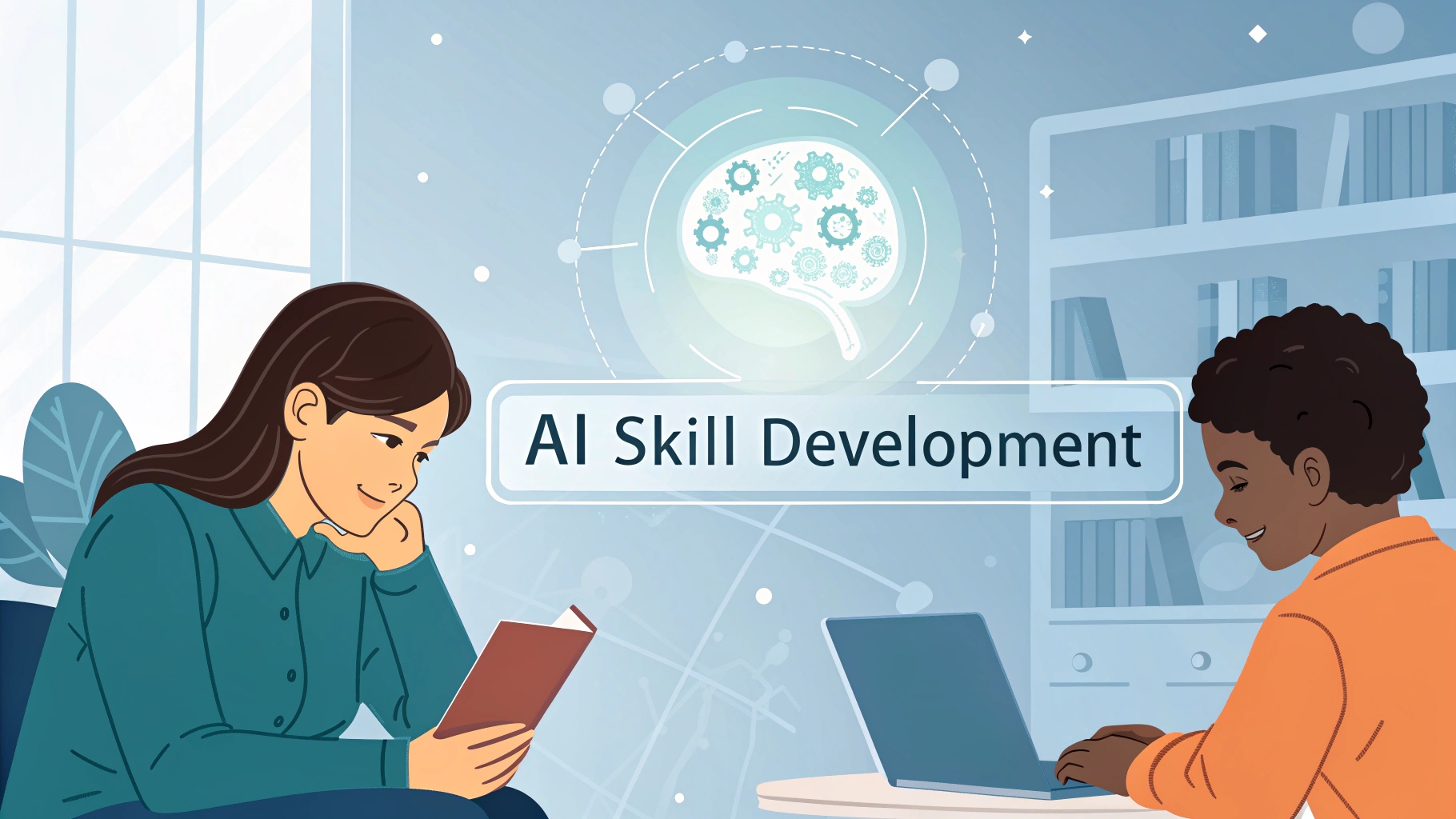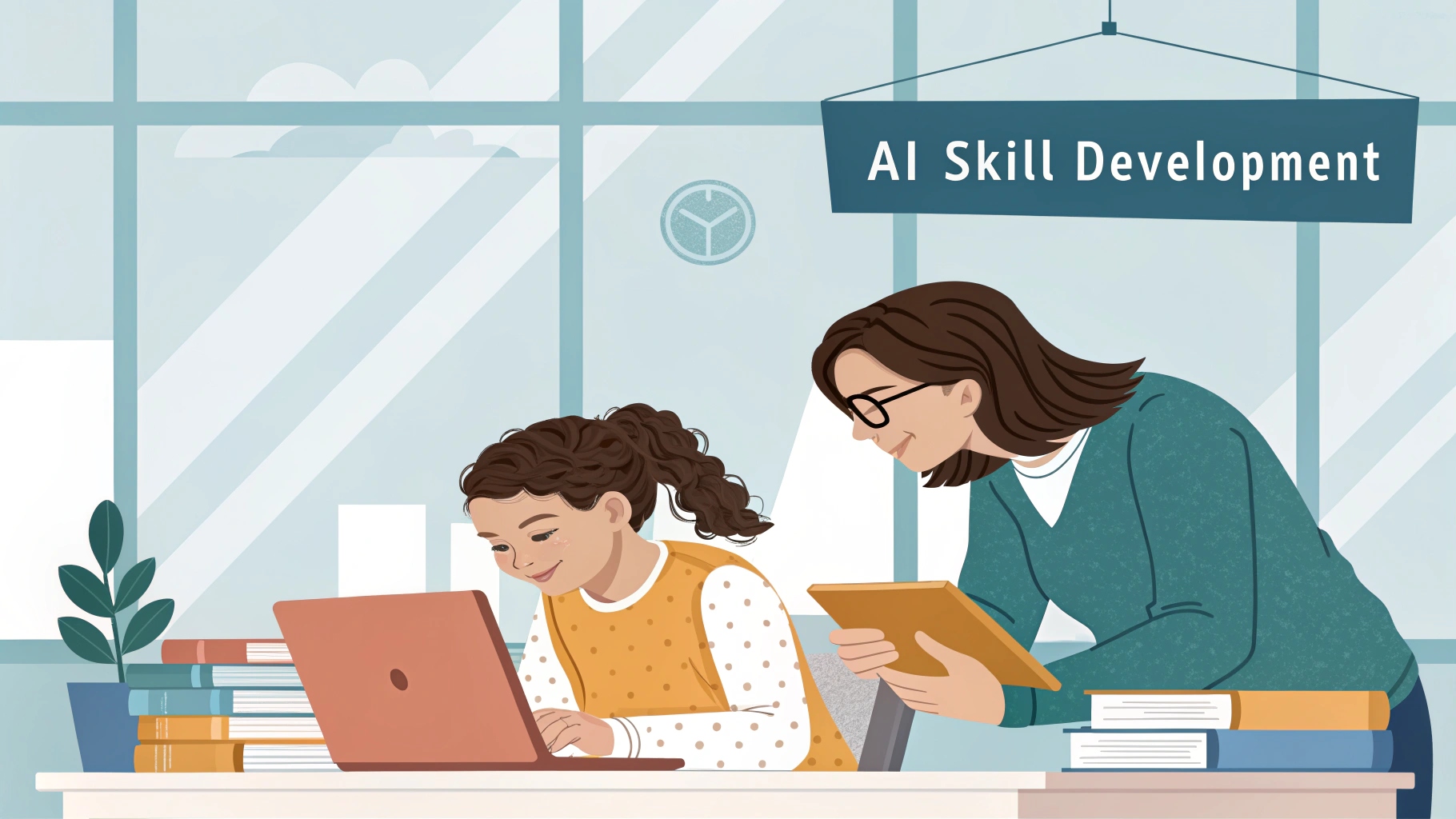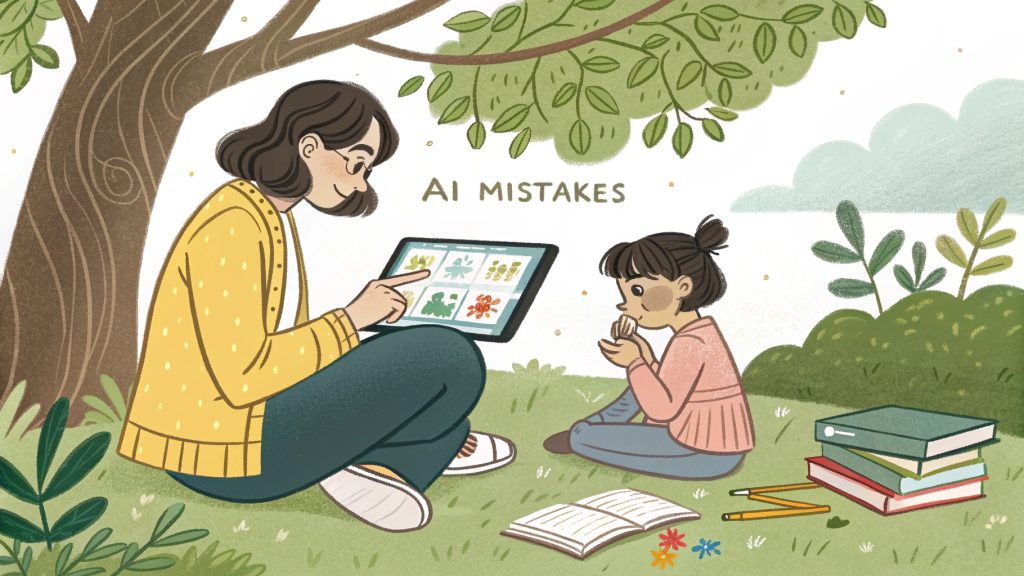
Did you know teens can now build real-world skills faster than ever, thanks to assisted learning and AI? In this guide, we’ll explore how artificial intelligence helps young learners accelerate their growth through smart tools, personalized support, and real-life examples. Whether you’re a student or a parent, you’ll discover how AI can transform everyday learning into something fun and powerful. Ready to level up?
Understanding assisted learning and AI in education
Can AI and education really go hand in hand? With assisted learning, the answer is a powerful yes. This section explores how artificial intelligence transforms education by offering personalized, responsive, and dynamic learning experiences. Let’s unpack how this smart partnership helps teens develop skills faster and with more confidence than ever before.
What is assisted learning and how does AI fit in?
Assisted learning is when technology supports the way we learn, like having a digital helper alongside your teacher. It doesn’t replace your teacher; instead, it makes learning easier and more tailored to what you need. Now, add AI (Artificial Intelligence) and things get even smarter. AI learns from how you interact with it. It can track your progress, spot what you struggle with, and offer content that helps you catch up or move ahead.
“AI in assisted learning acts like a personal tutor that understands your pace, your interests, and the exact point where you get stuck.” – EdTech Expert Panel, 2024
Why teens benefit the most from AI-assisted education
Teenagers today grew up with tech. They swipe, tap, and voice-command their way through daily life. That means they’re more comfortable using AI-powered tools like learning apps, smart tutors, or voice assistants. But it’s not just about convenience. Teens are at a stage where skill development is key, preparing for jobs, college, and life. AI helps them learn faster, smarter, and in ways that actually stick.
Common challenges teens face in skill development
Why do so many teens struggle to develop new skills efficiently? It’s not just lack of effort—it’s a system not built for them. This section dives into the everyday challenges teens face in traditional learning environments and sets the stage for how AI can provide real solutions that actually work.
Lack of personalized learning paths
In traditional classrooms, everyone gets the same lesson at the same pace. But not all students learn the same way. Some are visual learners, others prefer hands-on tasks. When learning isn’t personalized, many teens either get bored or overwhelmed. This slows down skill development and lowers confidence.
Short attention spans and disengagement
Let’s be honest, sitting through a 45-minute lecture can be tough, especially if it doesn’t feel relevant or fun. Teens often switch off when the content doesn’t grab them quickly. This leads to poor retention and low motivation. It’s like trying to watch a slow movie with no action scenes.
Outdated teaching methods vs digital natives
While the world has moved on to streaming, apps, and instant feedback, many classrooms still rely on textbooks and whiteboards. Teens, as digital natives, crave more interaction and customization. When learning methods feel old-school, students tune out or feel disconnected from what they’re supposed to be mastering.
How AI tools accelerate Skill-building in teens
Imagine a learning coach that adapts in real time and never gets tired, AI can do just that. In this part, we’ll uncover the exact tools and methods AI uses to speed up skill development in teens, making the process more fun, personalized, and effective than ever before.
Adaptive learning platforms that adjust in real time
AI-powered learning platforms can analyze a teen’s answers and behavior in real time. If a student struggles with a math concept, the AI can instantly suggest simpler problems or helpful videos. When progress is detected, the system automatically raises the difficulty level. This personalized learning loop helps teens build skills step by step without waiting for a teacher’s next lesson plan.
Intelligent tutoring systems for one-on-one guidance
Imagine having a tutor that’s always available, never gets tired, and remembers everything you’ve learned. That’s what intelligent tutoring systems offer. These AI tools can break down complex topics into manageable pieces, ask follow-up questions, and provide instant feedback. They guide you like a GPS for learning, rerouting when you’re lost, speeding up when you’re confident.
Gamification and motivation through AI-driven apps
AI tools often include gamification features, points, badges, leaderboards, and levels, that make learning feel like playing. This keeps teens motivated and eager to continue. For example, language-learning apps like Duolingo use AI to adapt lessons and challenges to your progress, making skill-building more engaging than memorizing flashcards.
“Gamified AI apps have increased user retention by over 60% among teens aged 13 to 17, proving that fun really is the key to consistent learning.” – Global EdTech Review, 2023
Proven strategies for using AI in assisted learning
Want to get the most out of AI in teen education? You need a solid strategy. This section reveals expert-backed techniques for combining AI with assisted learning—from goal alignment to mentorship balance—so teens can gain real results, not just screen time.
Aligning AI tools with teen learning goals
The first step is knowing what the teen wants to achieve. Is it coding? Writing? Graphic design? Once the goal is clear, the right AI tools can be chosen to support that path. For example, teens interested in writing can use Grammarly or Jasper AI to refine their writing skills through smart suggestions.
Balancing AI and human mentorship for better outcomes
AI is powerful, but it can’t replace empathy or encouragement. That’s why a balance between AI and human guidance is essential. A teacher or parent can monitor the AI’s suggestions, keep the student on track, and offer emotional support. It’s like combining GPS with a real-life co-pilot, you get the best of both worlds.
Using feedback loops and progress tracking tools
AI tools often include dashboards or visual trackers that show progress over time. Teens can see how they’ve improved and where they need work. This boosts motivation and builds a growth mindset. Seeing that you’re 80% closer to mastering a skill makes you want to push that extra 20%.
| Strategy | AI features | Impacts |
|---|---|---|
| Personalized learning paths | Adaptive algorithms | Faster comprehension |
| Real-time feedback | Instant scoring & suggestions | Stronger retention |
| Progress tracking | Performance analytics | Boosted motivation |
Choosing the right AI tools for teen learners
Not all AI tools are created equal, especially for teens. Here, we’ll guide you through choosing platforms that are not just trendy but truly effective. Whether it’s for coding, languages, or STEM, this section will help you find tools that engage, teach, and grow with your teen.
Features to look for : Personalization, UX, engagement
Not all AI tools are built the same. The best ones for teens are easy to use (great user experience), adaptable (customized lessons), and engaging (games, challenges, feedback). Look for tools that track learning paths, let users set goals, and adapt to their performance.
Top-rated AI apps for coding, languages, and STEM
Here are some of the best AI-assisted learning apps for teen skill development:
- Duolingo: AI-powered language learning with fun challenges.
- Khan Academy: Offers AI features for personalized math and science help.
- CodeCombat: Teaches coding through gaming and adaptive challenges.
- Photomath: Uses AI to solve math problems and explain them step-by-step.
- ChatGPT: Helps teens brainstorm, write, and revise essays or study topics interactively.
“The right AI tool can turn a struggling teen into a confident learner by making tough subjects feel accessible and even fun.” – Learning Futures Report, 2024

Real-world success stories of teens using AI for learning
Does AI-assisted learning really work? These case studies say yes. This section takes a closer look at real classrooms and individual learners who have transformed their skills using AI offering concrete proof of the power behind this tech-driven approach.
Case study 1 : Mastering coding with AI support
Meet Sam, a 14-year-old who always wanted to build video games but struggled with the logic behind coding. Traditional textbooks and YouTube videos didn’t help much. Then Sam discovered CodeCombat, an AI-powered platform that gamifies coding. Each level was like a mission. The AI noticed when Sam repeated the same mistake and offered hints tailored to his logic gaps. Within three months, Sam had built his first interactive game.
“CodeCombat helped me go from zero to building a game I could actually play with my friends. It felt like leveling up in real life!” – Sam, 14
Case study 2 : Language fluency through gamified AI learning
Sarah, 13, was preparing to visit her cousins in France but didn’t speak a word of French. She tried Duolingo and was instantly hooked. The AI tracked her strengths and weaknesses, customizing vocabulary exercises and pronunciation tests. After two months of daily 15-minute sessions, she could hold basic conversations confidently.
Case study 3 : AI-enhanced learning for students with dyslexia
Jaden, a 15-year-old with dyslexia, found reading assignments exhausting. A teacher introduced him to NaturalReader, an AI text-to-speech tool. With it, Jaden could listen to his school texts while reading along. The AI even adjusted the speech rate based on his comfort level. Jaden’s grades improved, and his confidence soared.
AI tools help teens learn smarter, not harder. In our main guide, Mastering Assisted Learning with AI, we break down the core methods. Dive deeper with case studies on how Notion AI, Writesonic, and Grammarly personalize and accelerate teen learning. You might also want to avoid the common mistakes educators make when using these tools.
Common mistakes when using AI for skill development
AI can do wonders for learning but only when used wisely. This section highlights the most common mistakes parents and educators make when integrating AI into teen education, helping you avoid pitfalls and protect both the learning experience and your student’s wellbeing.
Relying too heavily on AI without critical thinking
While AI can guide and suggest, it’s not always right. Some teens tend to accept every suggestion without questioning. This creates passive learning instead of active understanding. It’s important to use AI as a guide, not as the ultimate authority.
Ignoring the importance of human interaction
Learning isn’t just about absorbing information. Discussion, feedback, and emotional encouragement matter too. Teens who depend only on AI may miss out on valuable social learning and teamwork skills.
Choosing tools based on popularity, not suitability
Not all popular apps fit every teen’s learning style. A flashy app might look fun but lack depth in content. It’s essential to test tools and see which ones truly match personal goals and learning preferences.
Expert tips to make AI-assisted learning more effective
Parents and teachers play a huge role in successful AI-assisted learning. In this part, you’ll find practical tips from experts on how to support teen learners, encourage engagement, and create a balanced learning environment that mixes human guidance with AI power.
Setting clear goals and learning paths
Before opening any app, ask: “What skill do I want to build?” Setting goals, like learning Python in 3 months or improving vocabulary for a test, helps AI tools stay aligned with your progress. Apps like Notion AI can help teens plan their tasks and track milestones.
Maintaining a consistent learning schedule
Consistency beats intensity. Rather than doing a 3-hour binge session once a week, 20 minutes daily works better. Many AI tools offer streak features to build daily habits. This trains your brain and makes learning a regular part of your life.
Reviewing progress and adjusting strategies regularly
Use built-in dashboards or export progress reports to see what’s working and what’s not. If improvement stalls, it might be time to switch the tool, change the topic order, or try new formats like flashcards or quizzes.
| Tips | Benefits |
|---|---|
| Set specific, measurable goals | Clear focus and direction |
| Use short, daily sessions | Improved retention and habit formation |
| Mix AI learning with real-world practice | Better skill application |
Future trends in AI-powered teen education
What’s next for AI and education? The future is closer than you think. This final section explores the latest trends shaping AI-assisted learning and what it means for preparing today’s teens for tomorrow’s careers. Get a glimpse into the learning revolution ahead.
Personalized AI mentors and learning companions
Soon, AI will do more than suggest flashcards. Teens may have AI mentors that know their long-term goals, learning pace, emotional state, and even favorite topics. These companions will suggest resources, check in regularly, and provide encouragement during tough times.
AI-driven creativity tools for design, writing, and music
AI is not just about math or language, it’s entering the creative zone too. Teens can now use AI to co-write stories, generate music, or design art. Tools like Canva Magic Design and ChatGPT are already enabling students to express ideas more freely and explore creative careers.
Integrating AI into school curriculums
Some schools are starting to embed AI into their lesson plans. For example, an English class might use AI for real-time grammar checks, while a science class could use simulations powered by machine learning. These changes mean AI isn’t just for self-learning, it’s becoming part of everyday education.
“Within the next five years, AI will be as common in classrooms as calculators once were.” – FutureLearn Education Forecast, 2025
Bridging the gap between AI, parents, and educators
Role of parents in guiding AI use responsibly
Parents play a key role in making sure AI tools are used wisely. They can set screen time limits, review apps for safety, and encourage balance between tech and real-world activities. With awareness, parents can turn AI into a trusted learning partner.
How educators can integrate AI into teen learning
Teachers don’t have to compete with AI, they can collaborate with it. By recommending specific tools, creating AI-based projects, or showing students how to fact-check AI responses, educators can help teens become smarter, not just faster, learners.
Ensuring safety, ethics, and digital literacy
AI tools should be safe and respectful of data privacy. Teens need guidance on how their data is used, how to spot bias in AI content, and how to use AI responsibly. Digital literacy is just as important as learning math or science.
- Teach critical thinking when using AI answers
- Discuss the ethics of AI-generated content
- Use parental controls and privacy filters where needed
For a complete overview of AI-assisted learning, explore our in-depth guide on mastering assisted learning with AI.
From coding to language learning, AI is helping teens develop skills faster, smarter, and more enjoyably. With the right mindset, tools, and support, assisted learning with AI becomes a game-changer. Don’t just scroll, share this with a fellow learner or explore more about AI productivity in education. Your learning journey just got turbocharged.


